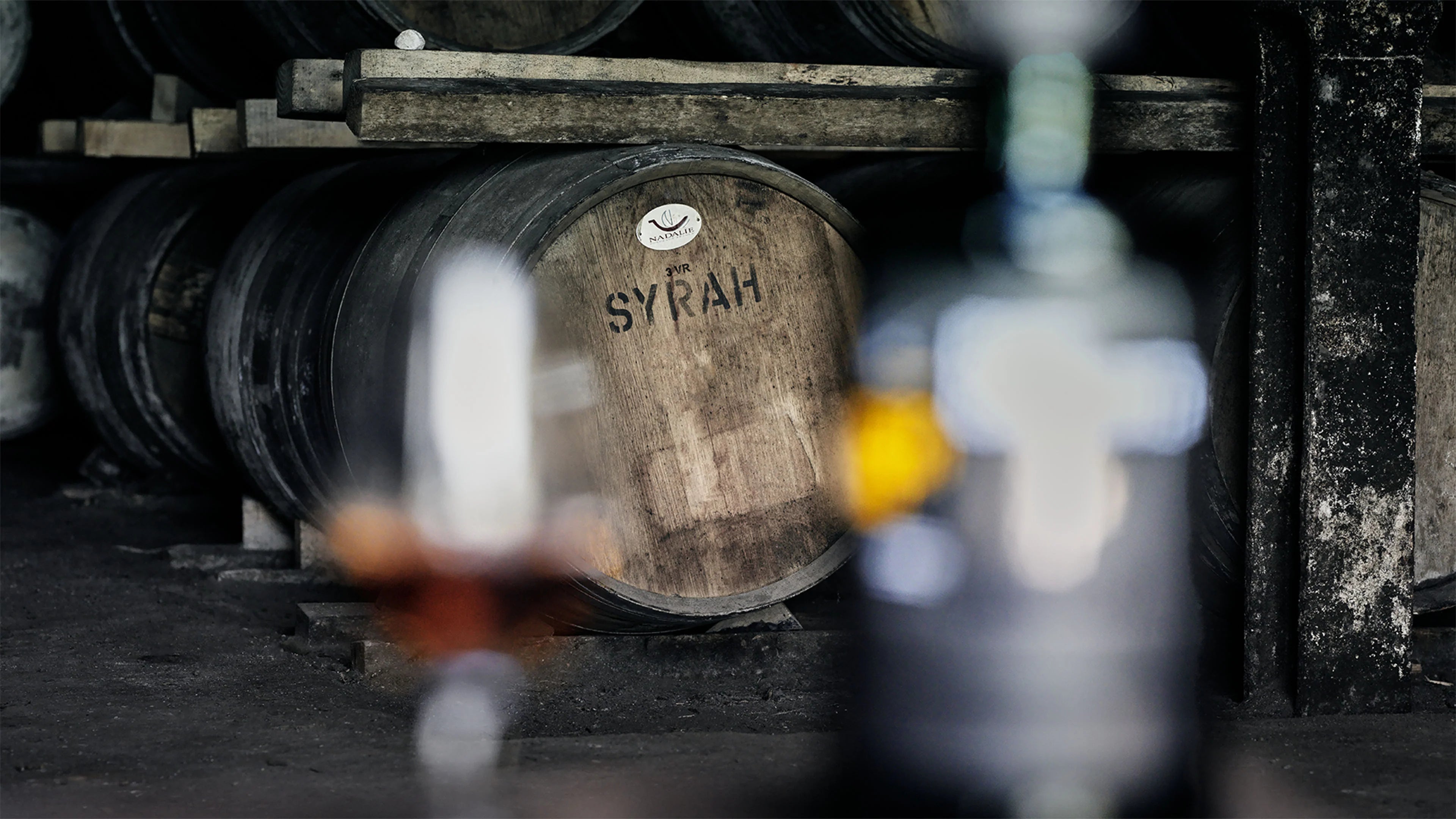Codpieces, Clamdiggers, and Casks: Wine Trends in Whisky
- 5 mins
Following the launch of Port Charlotte SYC:01, our 7th release in our Cask Exploration series, we look back at changing fashions in cask maturation.

Following the launch of Port Charlotte SYC:01, our 7th release in our Cask Exploration series, we look back at changing fashions in cask maturation.

It’s funny what society celebrates, what it scorns, and how those can flip over time. Like shoulder pads, clamdiggers, or even the salient codpiece (admittedly, this trend hasn’t made it past the runway or Kiss’s wardrobe since the 16th century), what’s hot and what’s not can change in a matter of months – sometimes causing quite a stir on its journey. Scotch whisky enthusiasts, for example, have found that the cask types used for maturation can be a fairly contentious issue.
Today, approximately 90% of Scotch whisky is aged in ex-bourbon barrels, but it wasn’t always that way. When Bruichladdich Distillery began experimenting with wine casks for Scotch maturation in the early 2000s, it was met with a fair bit of questioning and criticism. Yet, it wasn’t so long ago that wine casks were all that were used.
In the 14th century, oak barrels were the preferred container for anything that needed shipping. By the late 17th century, Spanish sherry was the darling of UK drinkers; with 90% of all Vino de Xerez exports being sent north and across the channel. This naturally resulted in empty sherry casks – alongside ex-brandy and other fortified, dessert and still wines – scattered across the country. A handy opportunity for enterprising whisky distillers.

The switch to bourbon came about due to legal changes in both the US and Spain. In 1938, Roosevelt’s “New Deal” required that all bourbon be aged in new oak. And in 1981, Spain introduced a law that required all sherry to be bottled on Spanish soil. The result of these two regulations was that ex-bourbon barrels became available in spades while the supply of ex-sherry casks in Britain dried up.
Of course, these trends were the result of economic and political factors, rather than the eccentricities of the runway. The effects on whisky, however, were no less far-reaching (though thankfully, far more tasteful).
Out with the Old (World), in with the New. And so it was that America’s surplus became whisky’s treasure.


Roll forward a few decades, and one brazen distillery began experimenting with wine casks. Bruichladdich Distillery, under the leadership of Master Distiller Jim McEwan and former wine merchants Mark Reynier and Simon Coughlin, led the charge against a barrage of criticism into what is now a fashionable practice known as finishing – or Additional Cask Enhancement (ACEing) as McEwan coined it.
In 2001, while the pot stills were being dusted off and the mash tun restarted, the distillery was simultaneously considering what to do with the 6,500 casks full of whisky stored in the warehouses. The inherited liquid had been destined for blended whiskies; cask finishes hadn’t been a great consideration. A combination of need (short on cash to invest in top-quality bourbon barrels for finishing), experience (Mark and Simon’s connections in the wine industry), and a maverick attitude, led the distillery to make use of ex-European wine casks to add further depth of flavour. It was a move that turned heads and sparked strong opinions among whisky fans and industry peers. What it produced however, were absolute gems.


Twenty-four years have passed and the winds have shifted. Finishing, or even ageing, Scotch in wine casks was once a matter of economic prudence. These days it’s a form of curious exploration – another medium with which distillers can express their art and expertise.
Port Charlotte’s Cask Exploration series sees Head Distiller, Adam Hannett, make the most of this art. While the flagship, Port Charlotte 10 uses 25% French wine casks and 75% American whiskey casks, The Port Charlotte 18 is a full embrace of refill sherry and French Oak wine casks.
Our newest release, Port Charlotte SYC:01 is a heady mix of red berries, rich fruits, gentle spice and elegant peat smoke, delicately balanced with vibrant notes of candied peel and fresh mango. The spirit was initially filled into first fill (75%) and second fill (25%) bourbon barrels in 2013 and matured for five years before being recasked into first fill Syrah wine casks. After giving the Syrah casks four years to work their magic, the spirit was married in refill bourbon casks before bottling.

Trends come and go, and often come back ‘round again. But whisky maturation in wine casks isn't just another trend – it’s a vehicle for creative exploration. Through casks, we open a world of provocative new flavours that enrich the drinking experience. Pushing the envelope and exploring the limits of what’s possible is half the fun. The other half is tasting the results, of course. Try it yourself and tell us what you think.
* For a more in-depth look at the effects of cask on maturation, see our article here.
DISCOVER THE LATEST STORIES AND NEWS FROM BRUICHLADDICH DISTILLERY

Please enter your birth year
Location
You must be of legal drinking age in your location of residence to enter bruichladdich.com. By entering our website you agree to our Terms & Conditions and Privacy Policy. We encourage you to enjoy our single malts responsibly.
You must be of legal drinking age in your location of residence to enter bruichladdich.com. By entering our website you agree to our Terms & Conditions and Privacy Policy. We encourage you to enjoy our single malts responsibly.
You must be of legal drinking age in your location of residence to enter bruichladdich.com. By entering our website you agree to our Terms & Conditions and Privacy Policy. We encourage you to enjoy our single malts responsibly.
You must be of legal drinking age in your location of residence to enter bruichladdich.com. By entering our website you agree to our Terms & Conditions and Privacy Policy. We encourage you to enjoy our single malts responsibly.